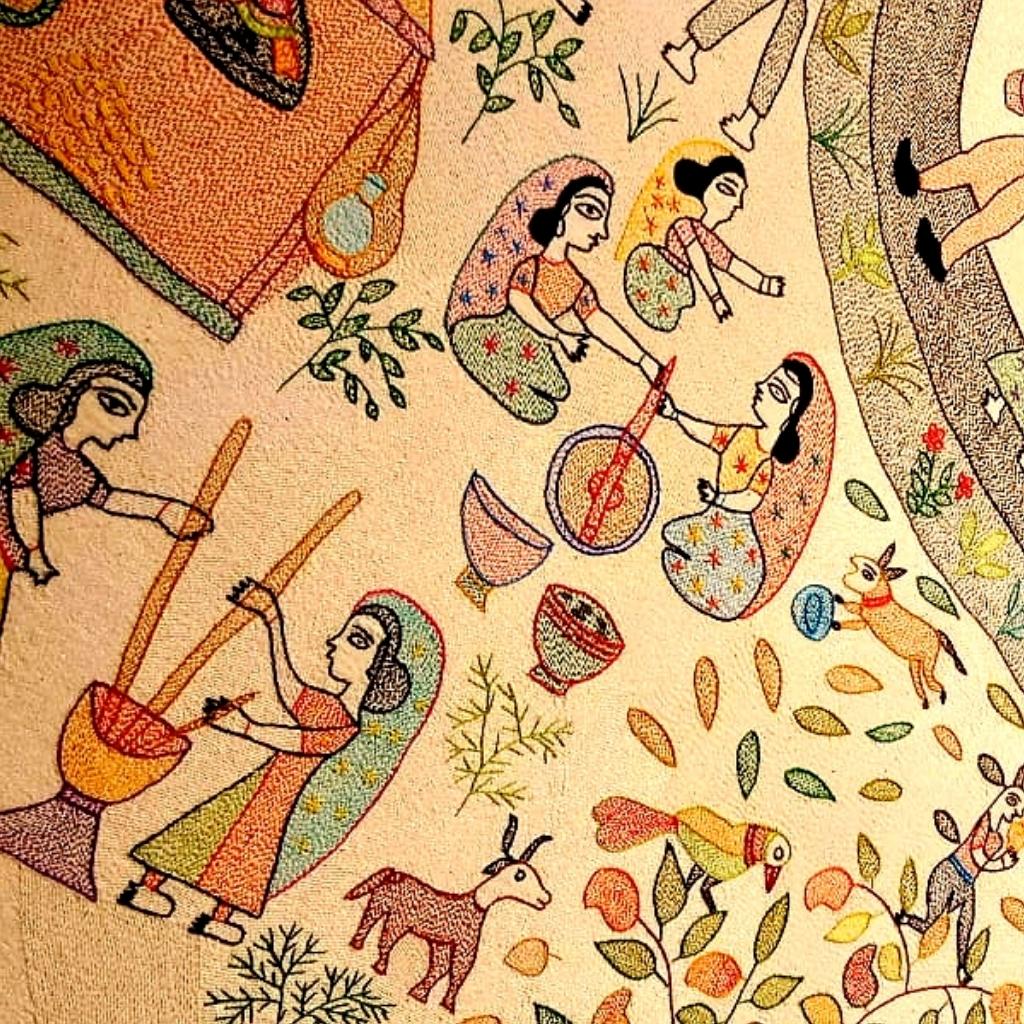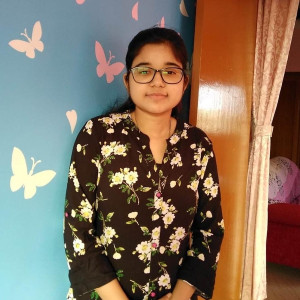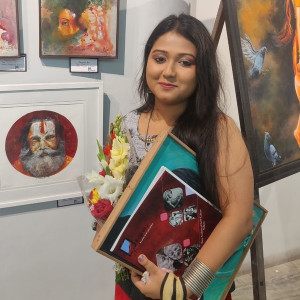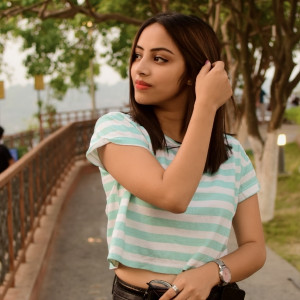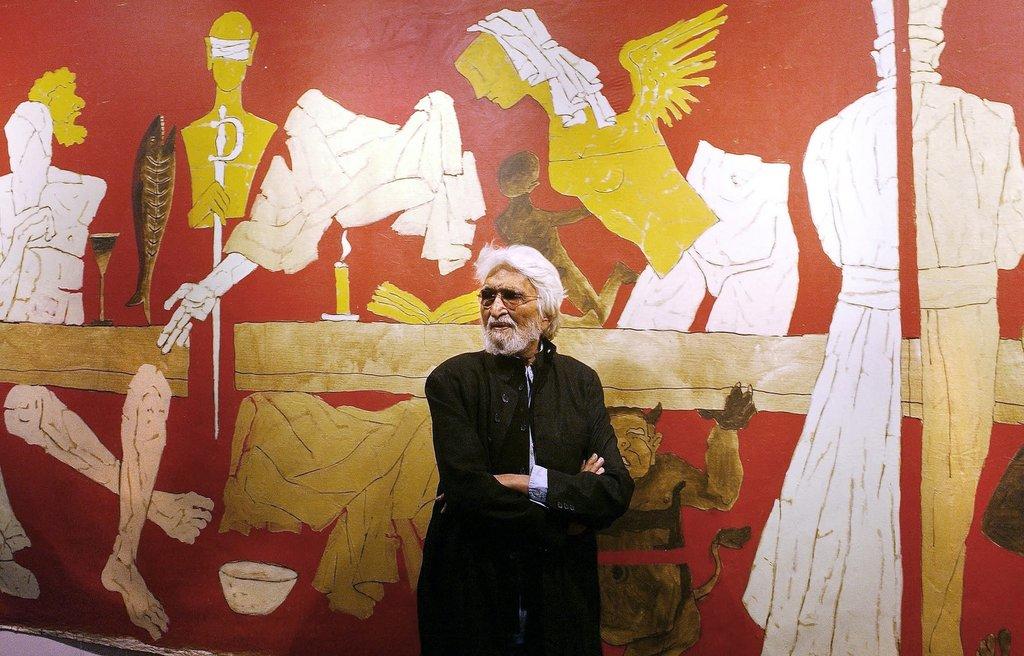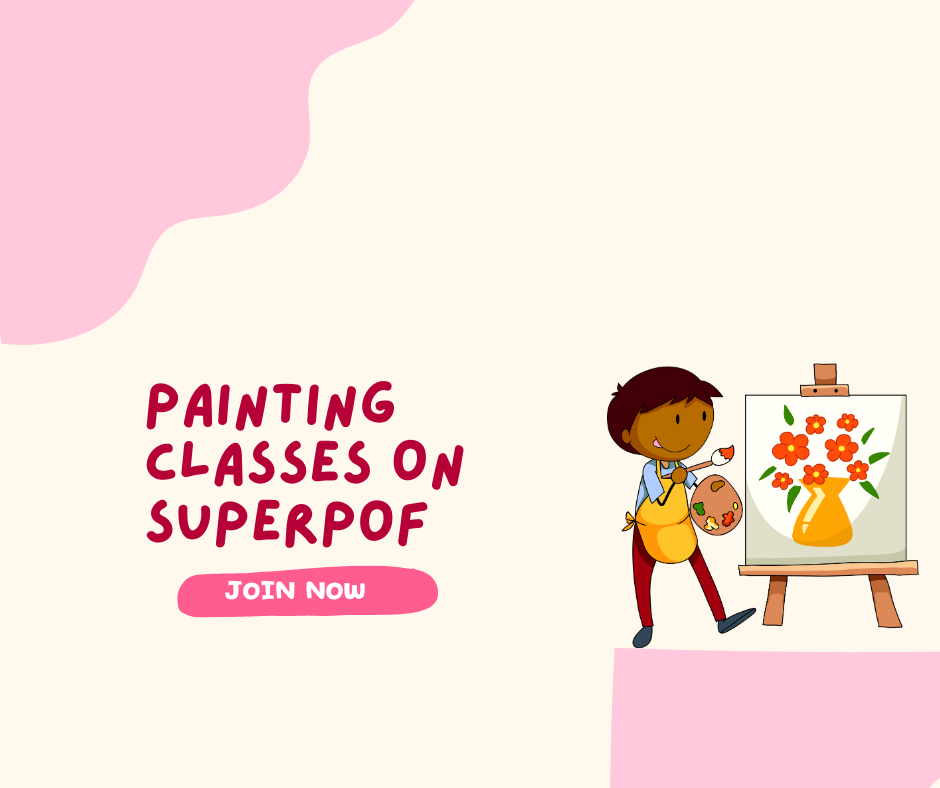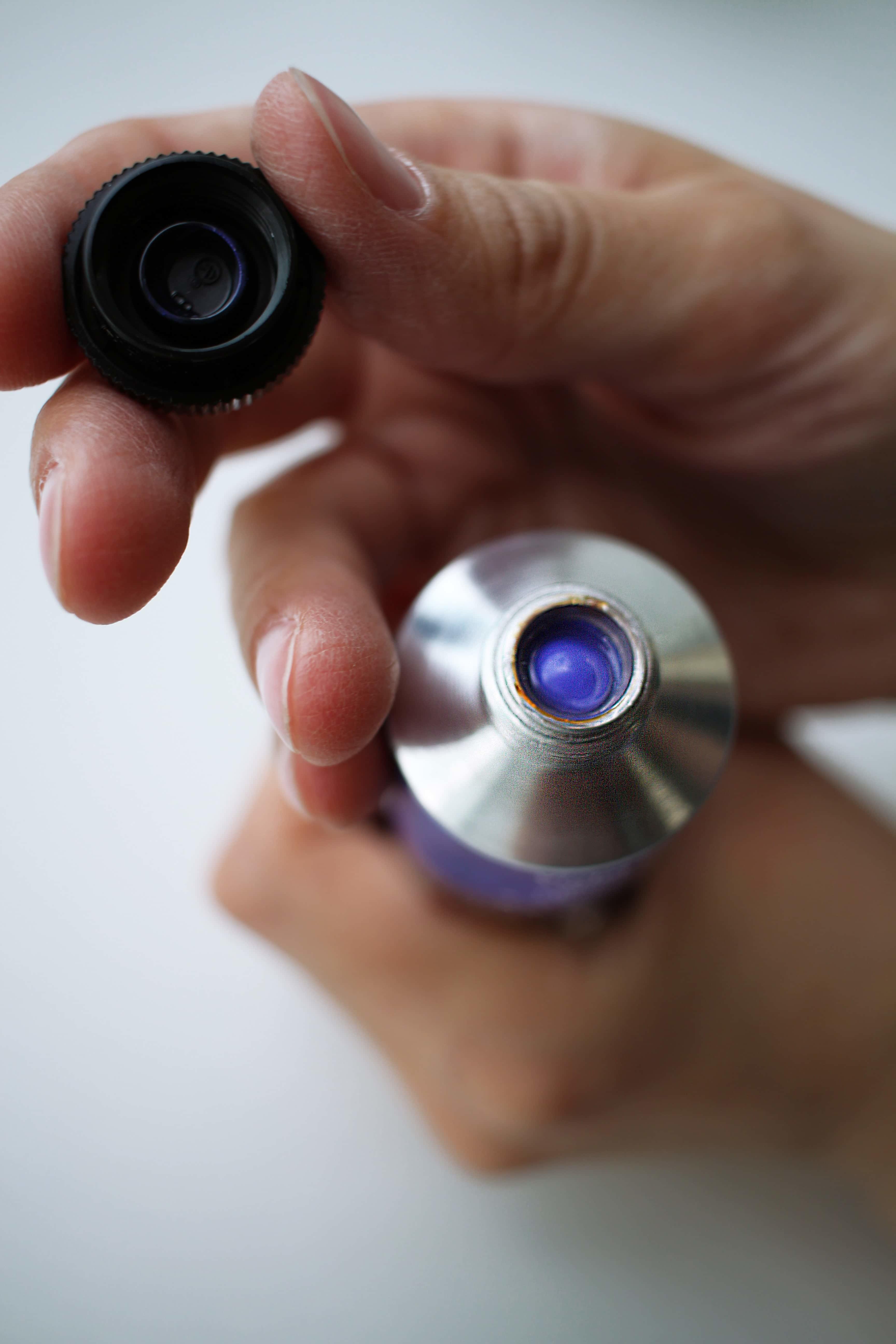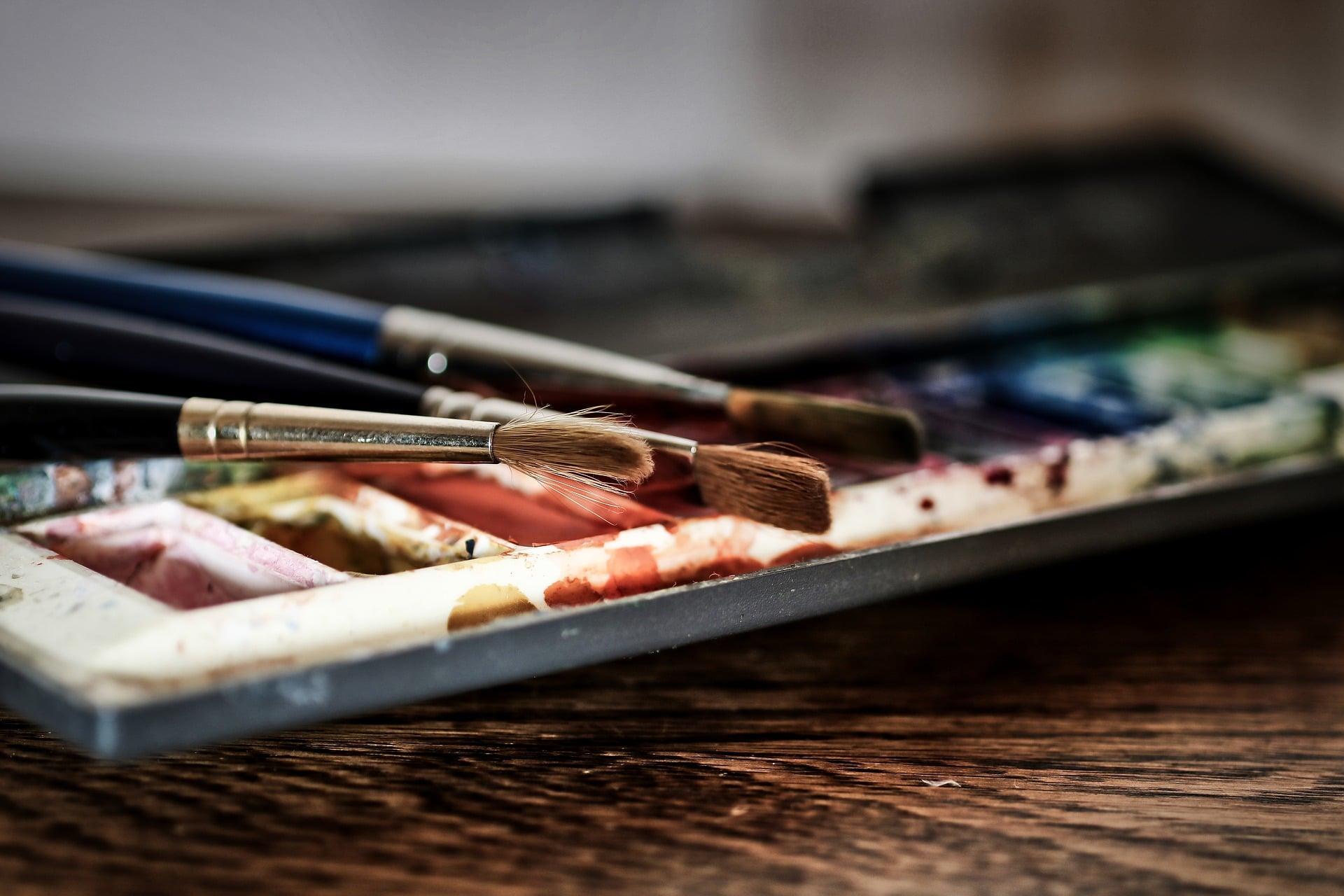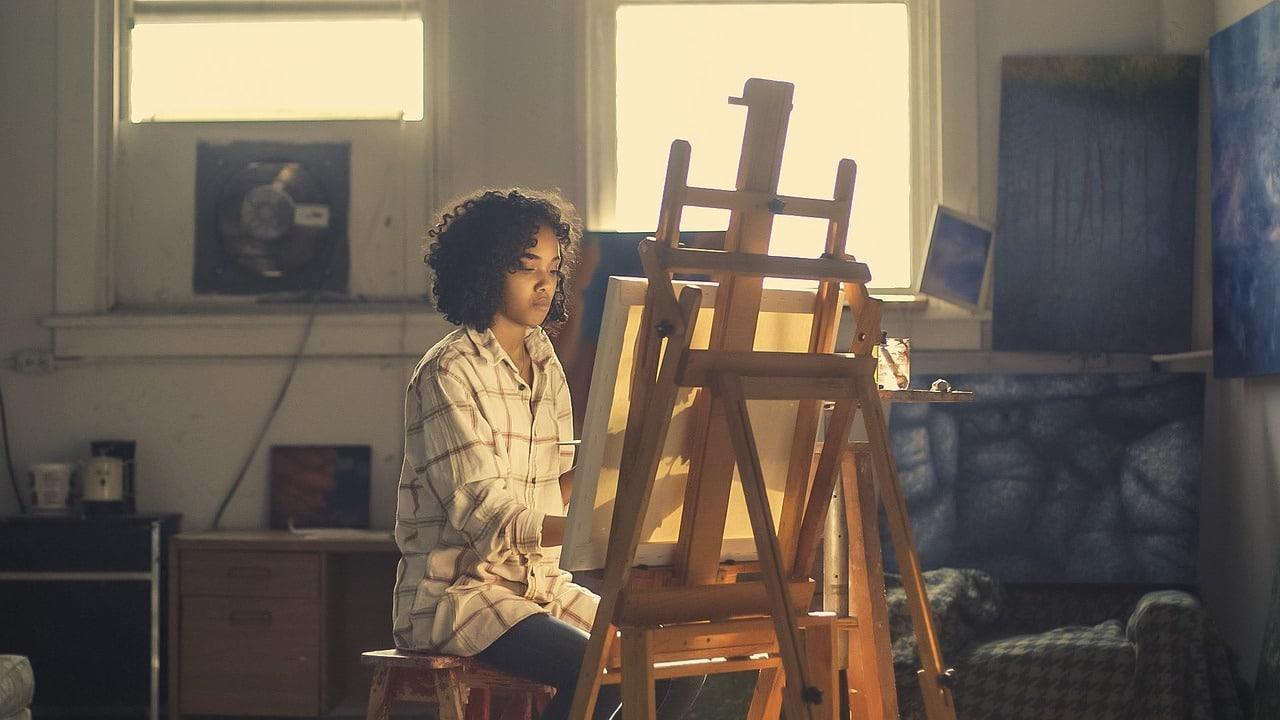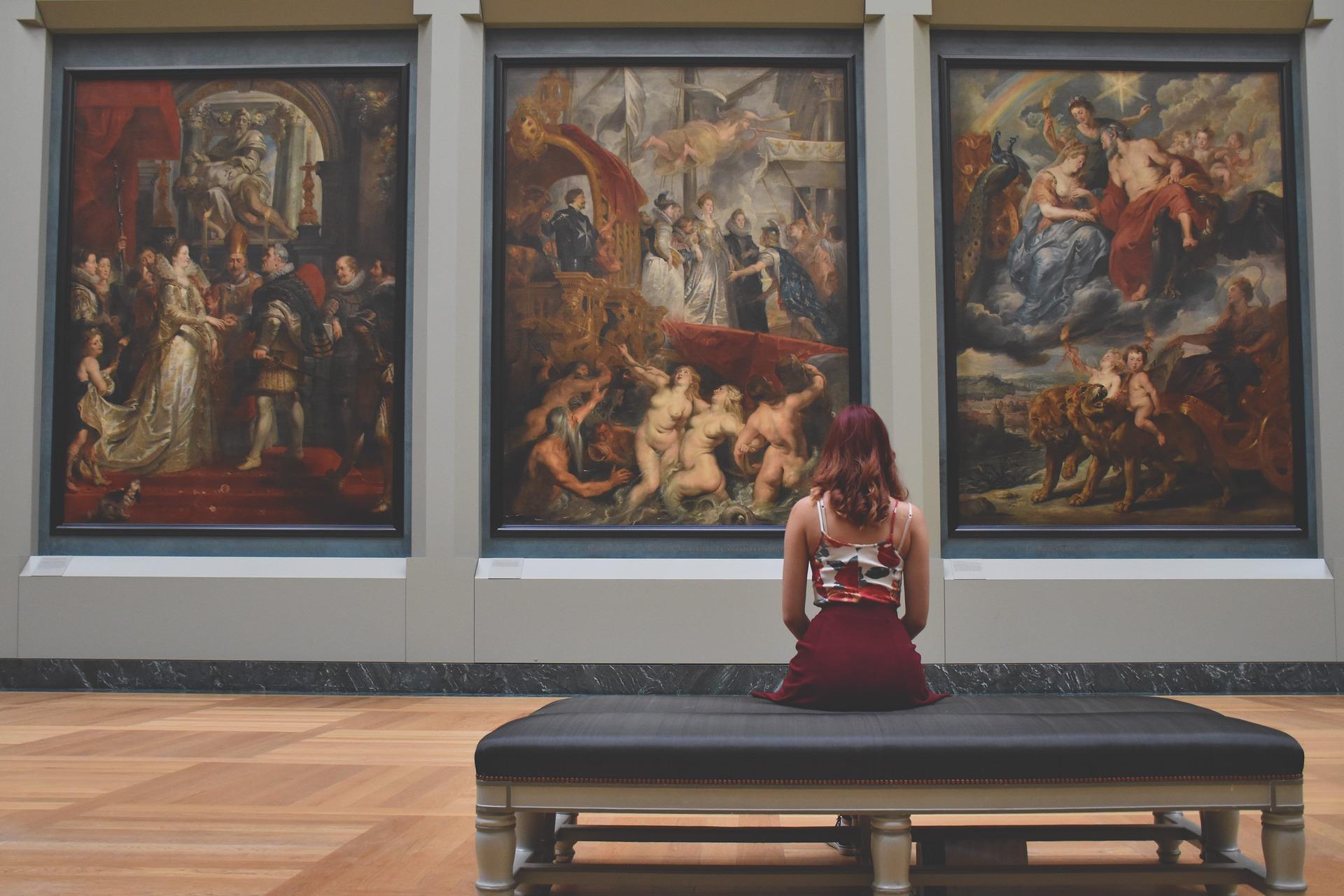The vibrant, unique, and captivating folk art and crafts of India are a perfect representation of the country's vast cultural diversity. Different painting styles are common in different parts of the world; they each symbolize traditions, practices, and ideas that are passed down from one generation to the next. The majority of Indian painting styles were created as murals or wall paintings. Urbanization eventually led to creation these painting mediums on paper, canvas, fabric, etc.
Indian painting styles serve as a perfect illustration of artistic expression through straightforward yet distinctive compositions and depict the indigenous way of life.
Folk paintings are the artistic manifestations of village artists and are characterized by the subjects they choose from epics such as the Ramayana, Mahabharata, and Bhagavata Purana, in addition to everyday village life, animals and birds, and natural elements such as the sun, moon, plants, and trees. These are a few of the most well-liked Indian folk painting styles.

Ancient Thangka Paintings
Although they are visually striking and intriguing, Thangka paintings are more detailed than they first seem. Thangkas are used as a medium for religious narrative because they typically concentrate on a certain deity and surroundings and because their form and the things surrounding them are frequently rich in symbolism.
They originated around the 7th century CE in the Tibetan Empire.
Experience is therefore necessary to fully understand the complexity and meanings ingrained in the works. The purpose of Thangkas is to aid viewers or Buddhist practitioners in their quest for nirvana. Qualities of a Thangka that add to the narrative of the picture are figure size, figure recurrence, and figure comparison and arrangement.
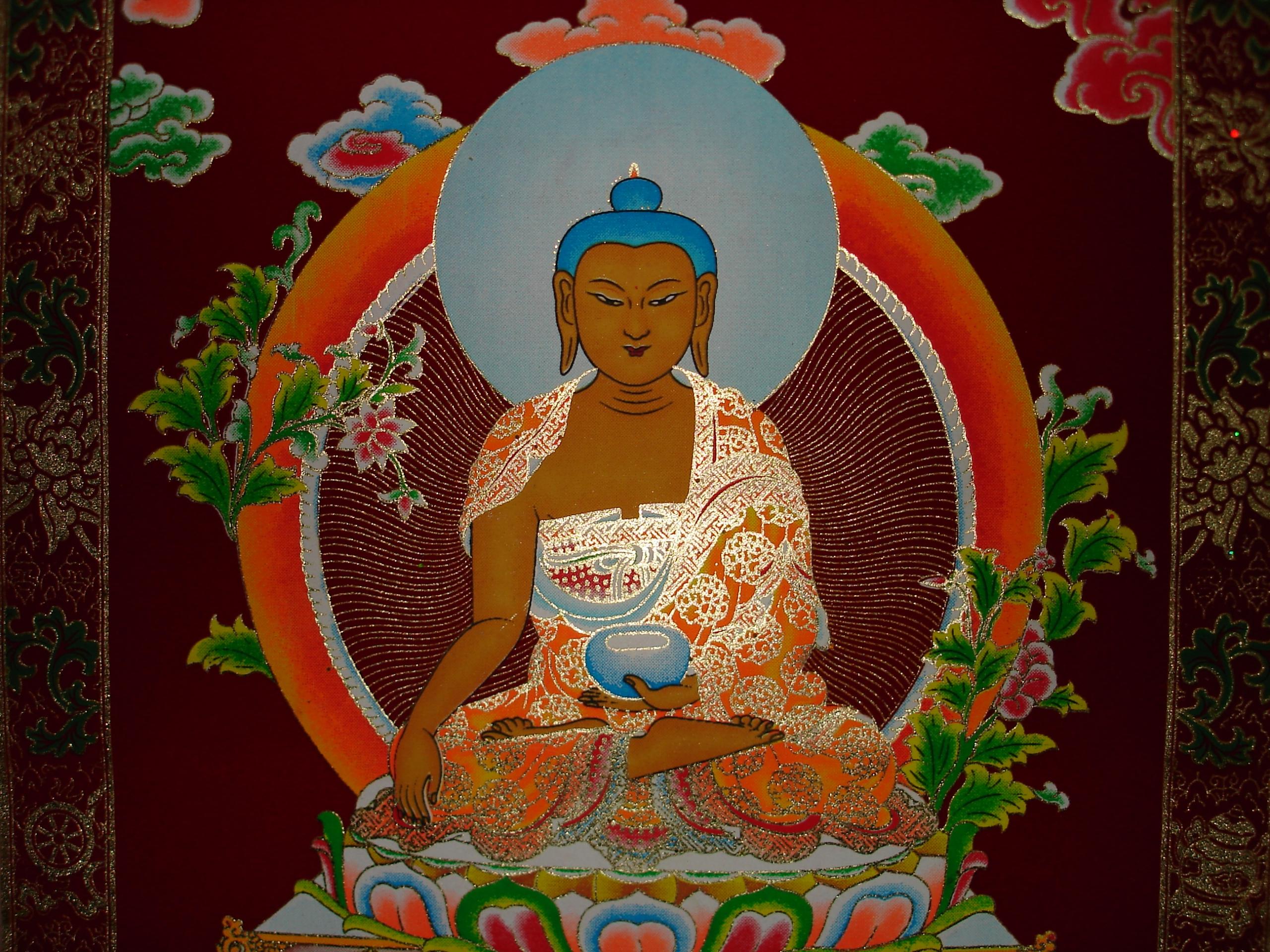
Cultural Worth of Thangka Paintings
The gods are only seen in the finest Thangka paintings, and beauty is defined by factors other than aesthetic appeal, such as the lineage of the work, the artist's intentions, and the precision of the proportions. There are four main uses for Thangkas:
- They acquire virtue and uplifting vitality.
- They assist departed spirits in their rebirth.
- In single-point meditation, they are used.
- They are used in ceremonies related to tantra.
The majority of Thangka paintings were ordered by private clients hoping for fame. Because gold is a rare and pure metal, using it in worship is believed to attract good karma. This led to the creation of Black Thangka paintings. The black books of Buddhism, such as Prajnaparamita and Kanjur, which were written in black on black with gold lettering, resemble these paintings. The Black Thanka paintings are said to have been created by a monk who first scattered a holy lama's ashes on the background of the artwork before painting the Thangka in gold.
Madhubani Paintings
The Mithila region, more precisely the villages of Jitwarpur and Ranti, which are near Madhubani city, is where the Madhubani painting tradition first emerged. In a literal sense, "honey forest" is what the word Madhubani implies. Where Madhubani paintings first appeared is a mystery.
Nonetheless, tradition has it that King Janak, who governed the Mithila Kingdom in the eighth or seventh century BCE, commissioned the creation of these paintings to immortalize the circumstances surrounding the union of his daughter Sita and Prince Rama (of the Hindu epic Ramayana).
Mithila, also known as Tirhut, Tirabhukti, and Mithilanchal, is a geographical and cultural region of the Indian subcontinent bordered by the Mahananda River in the east, the Ganges in the south, the Gandaki River in the west, and the foothills of the Himalayas in the north.
The origins of Madhubani paintings are believed to go back to the time of the Ramayana, which is approximately 2500 years ago. King Janaka, the ruler of Mithila, requested an artist to depict the wedding of his daughter, Sita, to Prince Rama in the 8th or 7th century BCE.
Traditionally, the colours for handmade Madhubani paintings were extracted from natural materials like flowers (the aparajita flower is used for blue, the bougainvillaea flower for pink, the flat bean leaves for green, the turmeric for yellow, and the rice powder for white), vegetables, and mineral stones. To produce brushes, they used bamboo sticks and twigs. However, artists of the day prefer to employ easily accessible colours and brushes from the market to save themselves the time-consuming task of extraction and painting.
Colours and Themes
The majority of the paintings' subjects are religious. The main themes of every artwork are fecundity and love. The prayer room, the ceremonial area, the bridal chamber, the main gates of the village to welcome guests, etc. are among the places in the house where they are ready. Drawings of mythology and landscapes differ based on the region and the style of the individual artist. The Hindu themes and designs that are most frequently painted are worshipping the Hindu deities and stories from their sacred texts, such as the stories of Radha and Krishna, Rama, Shiva, Ganesha, Laxmi, Saraswati, the monkey, the sun, the moon, the Tulasi plant, the Deep (a traditional lamp made of soil, a symbol of a happy life), wedding scenes, and other festivities.
Unique Madhubani Painting Techniques
The Mithila paintings are divided into two gharanas, Ranti Gharana and Jitwarpur Gharana, both of which are located in the Madhubani districts. Each gharana features five distinct styles. These unique Madhubani painting styles include:
- Bharni: Bright colours like orange, yellow, and red are used in this design style, and the outlines of the design are drawn in bold, heavy black lines.
- Kachni: Large-scale line paintings are created in the Kachni style.
- Tantrik: The Hindu mythological figures who are usually shown in these paintings are highly revered by the Hindu populace.
- Godna: Godna painting is the name of an old Indian tattooing method.
- Kohbar: This painting, which typically adorns the walls of the bride and groom's house, represents Hindu marriage traditions.

Warli Art
The tribe responsible for the amazing Warli folk paintings is found in the northern Sahyadri Range, which is home to Indian cities such as Jawhar, Palghar, Dahanu, Talasari, Mokhada, and Vikramgarh in Palghar district. The warli tribal painting art form originated in Maharashtra and is still commonly practised there today. It is regarded as one of the oldest forms of art that has ever been created. In Maharashtra folk art, the circle, triangle, and square are the three main geometric shapes.
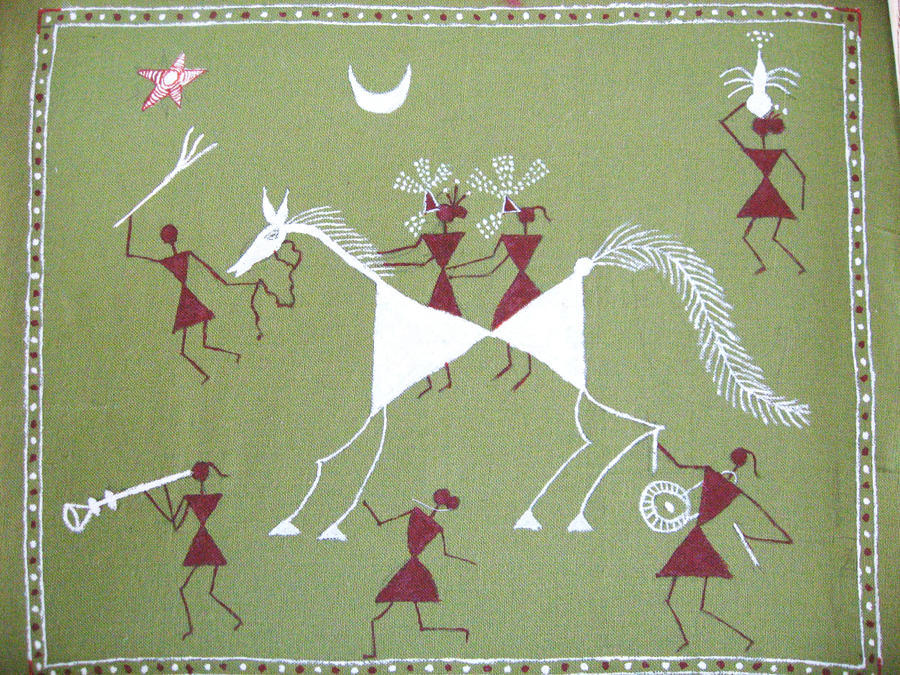
Raw Materials
In the past, warlas painted on their own dwellings' mud walls. This folk painting style never uses tracings or drawings of designs. It is the imaginative visualization of an artisan. Designs are painted directly onto walls with a wooden stick. The background of the design has a reddish-brown colour. House walls are painted with cow dung powder, to which geru powder is added for coating. A white paste made from rice flour is combined with water and used to paint with.
Painting Techniques
- A layout is selected.
- It is not necessary to trace; it is drawn directly into paper or fabric.
- A bamboo stick, which is bitten at the end to resemble a paintbrush, is a simple painting tool.
- Painting themes on surfaces like walls, paper, cloth, clay pots, and wooden things is done with white paste.
- The hands and legs of the human form are depicted dancing after the body was initially constructed by combining two triangles. Painting the last few details completes the final design.
- To iron the cloth, use its reverse side.
Colours
The murals are set against a reddish-ochre backdrop made of earth, cow dung, and trees that form the walls. All-white warli paint is used. Their white pigment is a combination of gum-bound rice paste and water. Natural colours like geru, turmeric, kumkum, leaves, and coloured flowers are used to create variations and tree gum is removed. The red hue of Butea Monosperma (Palas) blossoms is a symbol of the departed souls and is used to depict the existence of God Naradmuni. Black is derived from charcoal and is used to represent a hard spirit. Kumkum is a hue that symbolizes riches. Its yellow hue is extracted from pineapple.
Pattachitra Paintings
The Pattachitra painting style, which is predominantly utilized in West Bengal and Odisha, is one of the most established and popular painting styles. The name Pattachitra is derived from the Sanskrit terms "patta," which means cloth, and "chitra," which means picture. There are few living art forms as ancient and well-known as this one, having its roots in the 12th century.
The term "Pattachitra" originates from the Sanskrit words "patta," meaning cloth, and "chitra," meaning picture. These paintings are done on cloth, and their origin dates back to several centuries.
The majority of the people who make up the Chitrakar community are from the Puri district's small village of Raghurajpur. Furthermore, this is the only hamlet in India where every family makes wooden toys, patta paintings, and stone carvings. The Chitrakars set up the canvas using the traditional Pattachitra painting technique.
Distinct Pattachitra Art Style
Pattachitra prefers to work with icons as her medium. Popular themes in this religious art include the Badhia, which shows the Jagannath temple; Krishna Lila, which shows Jagannath as Lord Krishna demonstrating his powers as a child; Dasabatara Patti, which shows the ten incarnations of Lord Vishnu; and Panchamukhi, which shows Lord Ganesh as a five-headed deity.
What makes Pattachitra paintings distinct and easy to recognize is the way their creators blend the distinctive elements of traditional art and mythology. They have a classical feel to them, but the mythology and folk tales that inform the story the paintings portray will always influence the general atmosphere. Mughal influences can also be seen in the Pattachitra art that has been incorporated into apparel and accessories. The distinctive black lines in these paintings will be created using natural colours and vegetable and fruit dyes.
Each piece of art by Pattachitra tells a story; background elements usually simply serve to highlight the subjects of the picture. These paintings usually use classical elements, including flower designs, to enhance their visual appeal. Every Pattachitra painting has a border that usually relates to the story that is being told in the middle of the piece. Except for the original material and the paint used on the painting, Pattachitra paintings are simple.
Pithora Painting
The vibrant colours and intricate patterns of Gujarati pithora paintings create a visual feast. These paintings, which are often created in conjunction with festivals and festivities, depict stories from folklore, mythology, and daily life. The artist's ability to blend tradition with inventiveness is evident in the artwork, which typically features horses, gods, and the natural world.
The Pithora painting style of Gujarat, along with other regions of Rajasthan and Madhya Pradesh, is practised by the Rathwa, Bhil, Nayak, and Tadi tribes. The earliest known examples of these paintings are thousands of years old cave drawings discovered on a nearby mountainside near Koraj-i-dungar. These paintings depict the tribe's social, cultural, mythical life and beliefs.
Pithora Art Themes
There are many different motifs throughout the Pithora paintings, and each one is portrayed uniquely. The entire image is produced within a sacred area. A wavy line splits the plane into two pieces. The section above depicts the world of the gods. The first figure to be painted is Ganesha. He is shown as a horse in the lower right corner. There are pictures of other deities in this area as well.
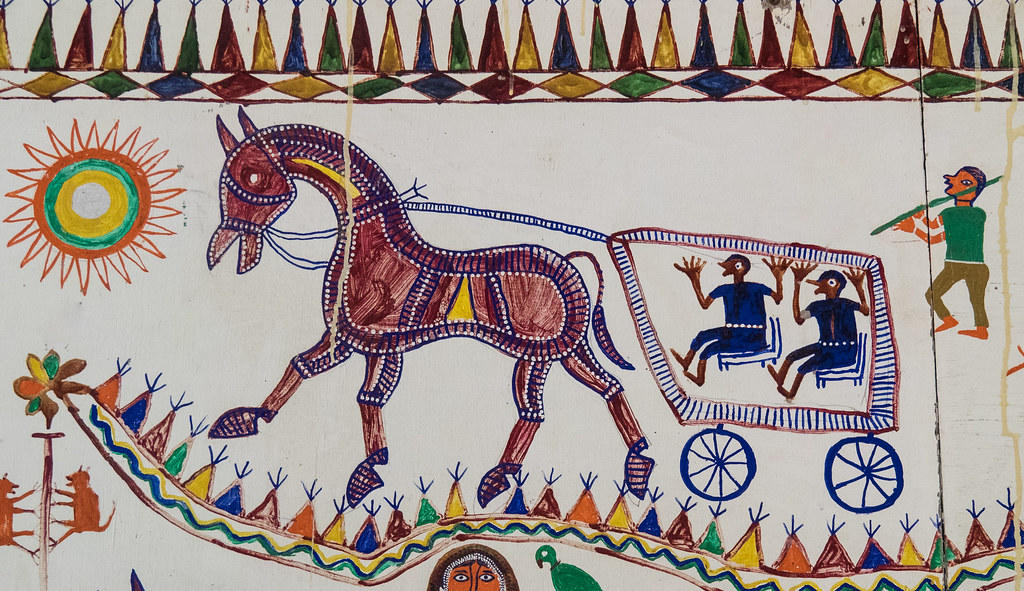
Pithora murals feature the horse as one of their most common symbols, along with the gods, goddesses, and ancestors. The seven horses seen in the paintings stand in for the seven hills that surround their territory. The primary characters of Pithorani and Pithoro are composed of white. Among the other gods depicted are Ramdev and Walan, the god of rain.
For seven days, the kumaris, or single girls, mix clay and cow dung to prepare the walls for Pithora wall murals. However, the men finish the paintings in groups of seven or eight. The background's characteristic white hue is a result of the pandurya white clay. The Rathwa tribe reveres it, and it is believed to purify the background of the picture. The hues orange, green, blue, yellow, and red are included in the Pithora murals.

